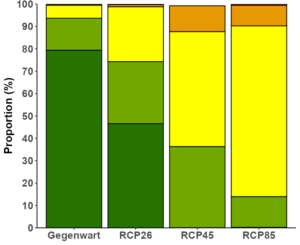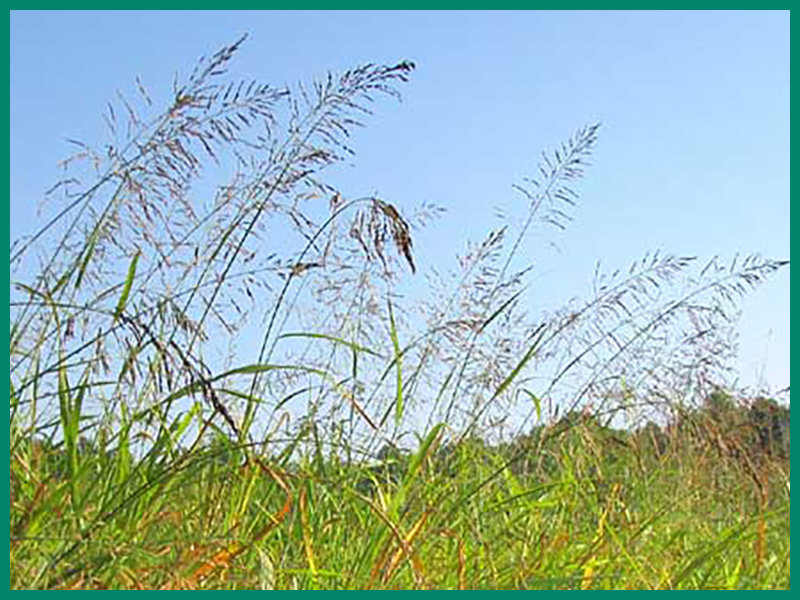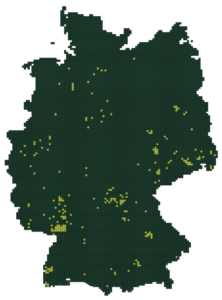Sorghum halepense
Johnson grass
Johnson grass (Sorghum halepense) is a perennial grass species originally from southern Eurasia. The plant can reach a height of up to 2 metres and is characterised by long, flat and pointed leaves with a prominent central vein. The inflorescences are dense, plume-like panicles that reach a length of up to 30 cm and contain a multitude of small, mostly reddish to purple flowers. The flowering period is from July to September. Wild sorghum prefers sunny to semi-shady locations and often grows along roadsides, in disturbed areas and along bodies of water. It has excellent drought resistance and can thrive in a wide range of soil conditions.
Types of damage
Region of origin
Southern Eurasia

Introduction vectors
Current distribution
Based on the FlorKart Database of the Federal Agency for Nature Conservation, as of 2013
Miscellaneous
Dispersion forecast
Indicates the proportion of land suitable for habitat under current and future climate conditions (2060-2080) under three emission scenarios (RCP26, RCP45 & RCP85).

Habitat suitability under current climate conditions
These habitat suitability maps show for Sorghum halepense where suitable habitat conditions exist.
The map on the left shows this for current climate conditions. Below this are maps for the time classes 2040-2060 and 2061-2080, in which three different emission scenarios can be selected.
The slider at the top left allows you to adjust the opacity of the map to make orientation easier.
By clicking on the respective quadrant, information on the environmental conditions present in it can be called up.
The methodology is explained here .












